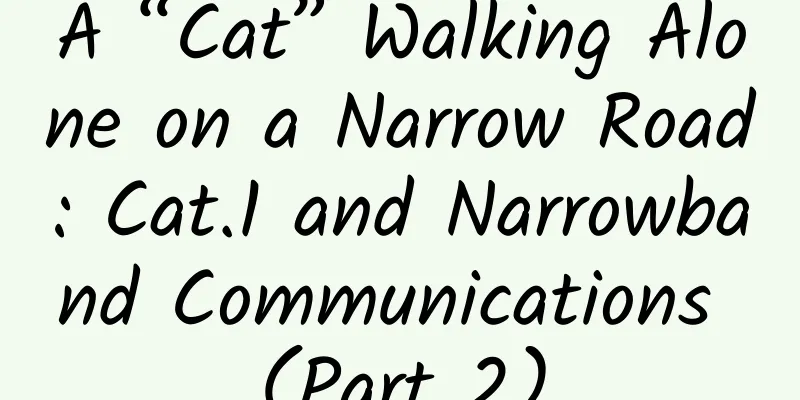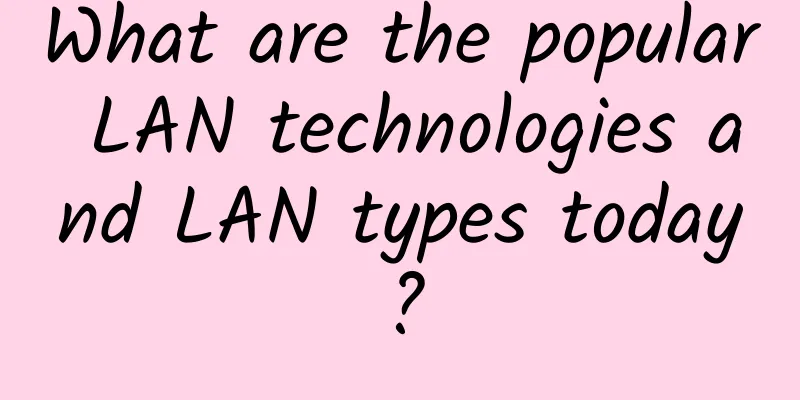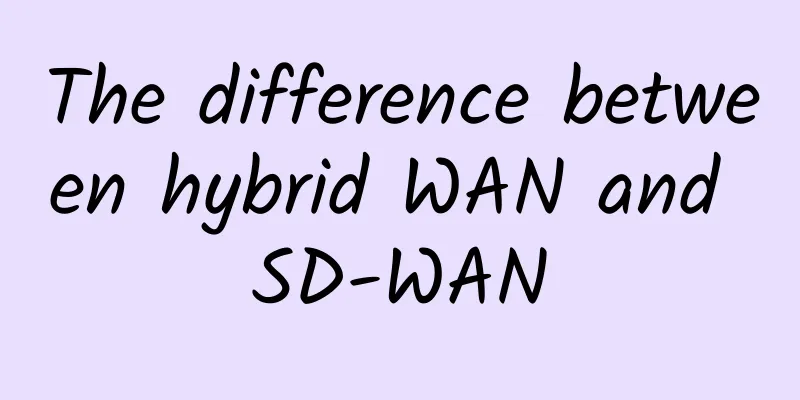A “Cat” Walking Alone on a Narrow Road: Cat.1 and Narrowband Communications (Part 2)

Labs GuideIn the previous issue, "A Cat's Alone Journey - Cat.1 and Narrowband Communications" , we mainly introduced the evolution history and main features of Cat.1. Part 01, What is narrowband communication?With the rapid rise of the Internet of Things, a large number of IoT devices are being integrated into our daily lives. However, different types of IoT devices carry services at different speeds, and the differences in communication requirements have led to the selection of various communication technologies. Devices in application scenarios such as smart homes and digital villages, such as cat-eye doorbells, video door locks, smart cameras, smart desk lamps, etc., require high-speed audio and video communication services, so a stable high-bandwidth network is required. In actual use, these devices often face problems such as poor signal quality and limited network bandwidth. How to carry out audio and video communication services in the absence of a high-bandwidth network environment has become an urgent problem that IoT devices need to solve. As a communication method focusing on stable connection, low power consumption and high coverage, narrowband communication has gradually attracted widespread attention. It is a technology that uses limited spectrum resources for data transmission, achieves higher coverage and better penetration through limited transmission bandwidth, and is suitable for IoT applications that require low power consumption, long battery life and stable connection. Unlike broadband communication, narrowband communication limits the transmission bandwidth to a narrow range. Although this limitation reduces the data transmission rate, it brings many advantages: (1) Stable transmission: Narrowband communications can better penetrate obstacles, allowing signals to remain stable even in complex environments such as indoors and tunnels; (2) Lower power consumption: Narrowband communications consume less energy, which is critical for battery-powered IoT devices; (3) Lower cost: Narrowband communication can ensure basic communication within limited bandwidth using less traffic, which can effectively save the cost of IoT devices that are online for a long time. (4) Simple network architecture: Narrowband communication technology can achieve a simple network architecture, which can effectively reduce network maintenance costs. Part 02, Narrowband Communications and Cat.1Cat.1 is a low-power wide area network communication standard designed to meet the needs of IoT devices for long-distance communication and low power consumption. Narrowband communication, as a communication method focusing on stable connection, low power consumption and high coverage, has a close relationship with the Cat.1 communication standard and plays an important role in the field of IoT. First, narrowband communication and Cat.1 share a focus on low power consumption and long battery life. By using narrowband signals and low-power modulation, narrowband communication can minimize power consumption when transmitting data, thereby extending the battery life of the device. This is consistent with the goal of the Cat.1 communication standard, which is committed to providing long-term stable connections for IoT devices. Secondly, narrowband communication and Cat.1 both pursue high coverage and stable connection. Narrowband communication technology uses limited transmission bandwidth to achieve higher coverage and better penetration by optimizing modulation and transmission schemes. The Cat.1 communication standard also focuses on achieving wide-area coverage to meet the communication needs of IoT devices in different geographical environments. This makes Cat.1 narrowband communication an ideal choice for connecting devices in distant or weak signal areas, such as doorbells and door locks in residential corridors, smart cameras in underground garages, and road monitoring in rural areas. These inherent connections and commonalities allow narrowband communication and Cat.1 communication standards to be combined to further optimize IoT communications. Narrowband communication technology can be used as part of the Cat.1 communication standard to provide it with lower power consumption, higher coverage and more stable connections. At the same time, the Cat.1 communication standard can also provide more resources and support for narrowband communication to meet higher-speed and more complex application requirements. Part 03 Cat.1 narrowband communication technology under AIoTelAIoTel is composed of AI+IoT+Telephony, which expresses a new multimedia interaction system built by technologies such as smart devices, the Internet of Things, and multimedia communications, also known as crop-connected multimedia. With the diversified development of this system, the application of multimedia interaction is also increasing, generating a large amount of demand for encoding, transmission, and storage of audio and video data, which brings with it problems such as high power consumption of equipment, high bandwidth cost of data transmission, and high storage cost. In order to solve these problems, China Mobile Smart Home Operation Center (hereinafter referred to as: China Mobile Smart Home) combines Cat.1 and narrowband communication to conduct in-depth research on bit rate concentration technologies such as audio multi-frame simultaneous transmission and non-continuous transmission, which can be applied to business scenarios such as Hejia Smart Talk and Mobile Home Security, and reduce the bit rate of narrowband audio communication by nearly 30%.
DTX technology is widely used in the field of voice communication and has important value in narrowband communication. In actual voice communication, about 40% of the time contains valid voice information, while the rest of the time is silence or background noise. Using high bit rates to encode and transmit these meaningless noises not only wastes channel resources and hardware resources, but also increases the amount of data transmission. Therefore, using DTX technology in narrowband communication can provide significant advantages. DTX technology can perform normal encoding when there is a voice signal, and achieve non-encoded transmission by low-rate encoding or reducing the transmission frequency when there is no voice signal. This can not only reduce CPU occupancy and power consumption, but also reduce the amount of data that needs to be transmitted, thereby saving bandwidth resources. Applying DTX technology to Cat.1 connections can effectively reduce energy consumption and improve communication efficiency in IoT device communications. For example, in home security scenarios, most of the time it is quiet and unmanned. At this time, using DTX technology can greatly reduce the power consumption of security equipment and save bandwidth resources. picture
Multi-Frame Packet (MFP) refers to combining multiple data frames into one data packet for transmission. In narrowband communications, since the transmission of audio and video streams requires certain data packet header information, the overhead of the data packet header is much larger than the actual amount of audio and video data that needs to be transmitted. However, by adopting MFP technology, the overhead of the data packet header can be effectively reduced, thereby more effectively utilizing the bandwidth resources of narrowband communications. This technology helps to further optimize data transmission and improve network performance in Cat.1 communications. picture By combining Cat.1 with narrowband audio and video transmission technology, the need for stable connection of IoT devices can be met and efficient data transmission can be achieved. In a low-power and narrow-bandwidth environment, this fusion technology can effectively realize audio and video data transmission of IoT devices, providing stronger support for IoT applications. Part 04, Summary and OutlookIn this article, we further explore the relationship between narrowband communication and Cat.1 communication and the technical means of Cat.1 narrowband communication. Cat.1 narrowband communication achieves the goals of low power consumption, long battery life and stable connection. This provides a reliable communication solution for audio and video services under AIoTel. China Mobile Smart Home will make full use of China Mobile's widely covered mobile 4G network to further strengthen the application and promotion of Cat.1 narrowband communication in the IoT ecosystem, achieve wider connections, more efficient data transmission and smarter applications, and bring users a more convenient and smarter life experience. |
>>: Front-end Science: What is an API Gateway? Why is it useful?
Recommend
How to ensure the reliability and number of nodes in CAN network communication
In CAN-bus circuit design, the transceiver can th...
Communications man, what on earth have you done to Everest?
Do you still remember the 5G "cloud supervis...
HostingViet: 50% off Vietnam VPS annual payment, 1GB/20G SSD/unlimited traffic/annual payment starting from 161 yuan
HostingViet has released the promotion for Octobe...
CC attack & TCP and UDP correct opening posture
introduction: 1: CC attack is normal business log...
In the interview, I was asked how the reliability of TCP is guaranteed?
We know that TCP is reliable. Our previous articl...
[11.11] ZJI Double 11 additional Hong Kong Alibaba models 55% off monthly payment starting from 412 yuan
Late last month, we shared the news that ZJI star...
Dish Network plans to acquire Republic Wireless
According to foreign media, Dish Network announce...
RAKsmart: Los Angeles/San Jose server flash sale starts at $30/month, Japan server flash sale starts at $59/month
RAKsmart is a foreign hosting company founded by ...
inetWS: $3/month KVM-2GB/30G SSD/10TB/13 data centers including Los Angeles and Seattle
inet.WS has released a 25% discount coupon for th...
Kunpeng Technology Open Day came to Shenzhen Futian to see how cloud-intelligence integration will open up the future
[51CTO.com original article] At 2:00 pm this Satu...
5G and WiFi6 technologies are driving the development of the Internet of Things
The strategic combination of 5G and WiFi6 network...
With the support of celebrities, how fast can 5G run?
With the freezing of 5G 1.0 version, the first co...
Google and Qualcomm join forces to fight against Apple. Will the global 5G competition landscape be further changed?
(Original title: Google and Qualcomm join forces ...
The Internet of Things is gradually entering a new era. These will affect our lives in the future.
Today, the rapidly developing IoT devices can rea...
How to distinguish network cables? Eight steps to teach you how to choose network cables
Many people don't know how to distinguish net...







![[Hard-core literacy] What exactly is coherent optical communication?](/upload/images/67eb8a61ee4fd.webp)

